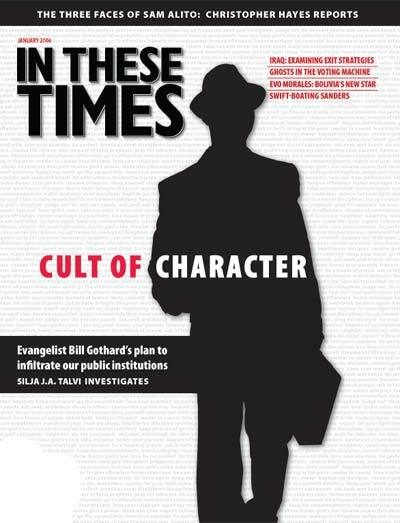“Armed with a fake e-mail address, a would-be bioterrorist could probably order the building blocks of a deadly biological weapon online and receive them by post within weeks,” reports the Nov. 12 New Scientist magazine. A skilled geneticist with access to a university-level lab could then use the DNA to create Ebola, smallpox, the 1918 flu, or other potential bioweapons.
“Currently, there is no law that says that a U.S. company can’t make the genome for smallpox and send it to anyone,” geneticist Michael Stebbins of the Federation of American Scientists told In These Times.
More than a dozen biotech companies make up the new field of commercial gene synthesis. Customers can order complete genomes or, to lessen suspicion, can buy partial genomes from different companies and construct the DNA themselves.
DNA synthesis is part threat, part promise. It can mean cheap and widely available drugs synthesized from rare plants. It can also provide valuable – albeit potentially dangerous – research material. In 2002 Eckard Wimmer made live, infectious polio viruses from scratch using synthetic DNA. And this year, in an astonishing breakthrough, scientists recreated the flu virus that killed 50 million people in the great 1918 pandemic.
That virus is made up of of eight genes. Five of those – harvested from the lungs of a doughboy who died during World War I – have been available for a while. The remaining three segments were discovered in the disinterred corpse of an Inuit woman buried for nearly a century in permafrost. Scientists working to regenerate the flu hope the complete DNA will help them protect against lethal new strains, including the H5N1 avian flu.
The genetic code of the 1918 flu they deciphered is now available on the Internet. Sale is legal and monitoring is lax. Of 12 firms that New Scientist queried, only five screened every sequence requested; four screened some, and three admitted to not screening any at all. In addition, some Western firms may be outsourcing DNA production to countries with cheap labor, including China.
Asked if he could make the 1918 flu virus, Stebbins said, “Yeah, absolutely. Once you have the DNA and the right equipment, it is very, very easy.”
Giving up the ghost
You just left the clinic, pills in hand. Odds are your doctor chose them based on slick ads and the word of the perky drug company reps, or relied on research papers presented at professional conferences and in medical journals. Which source would you prefer?
Turns out, there may be little difference: The authors’ names at the top of that research article confirming the safety and efficacy of your pills may be no more genuine than a drug rep’s smile. Oh, the prestigious docs with the alphabet credentials and the string of affiliations really did sign the article. They just didn’t write – or perhaps even read – it. A quiet industry of ghostwriters is churning out custom research for pharmaceutical companies that the London Guardian estimates comprises “almost half of all articles published in journals.”
“In order to reduce your workload to a minimum, we have had our ghostwriter produce a first draft based on your published work. I attach it here,” a drug company rep e-mailed Dr. David Healy, according to the Guardian. When the British researcher investigating the possible dangers of anti-depressants suggested revisions, the drug company replied that he had omitted “commercially important” points. The original paper ended up at the conference – under another doctor’s name.These ghostwritten pieces “are no more than infomercials paid for by drug firms,” Healy said.
Ghostwriting works like this: Pharma hires a medical education and communications company (MECC) to write the articles, pays academic physicians to sign them, and then places them in medical journals. According to a report by the nonprofit Hastings Center, “Some academics simply sign ghostwritten articles, while others work from a draft supplied by the company. Sticklers for honesty merely take the money and write the articles themselves.”
A lawsuit against Zoloft manufacturer Pfizer turned up articles produced by the company’s medical communications agency, Current Medical Directions. In place of authors’ names, the articles bore the notation “TBD,” assumed to mean “to be determined.” Hastings reported that between 1998 and 2000, 55 of 96 articles on Zoloft originated at Current Medical Directions, and – surprise, surprise – they painted a “happier profile of Zoloft than did the traditionally authored articles.”
Many docs are also happier. “Perhaps I can get you to write all my papers for me!” gushed Richard Atkinson of the University of Wisconsin in a letter to Excerpta Medica, which handled the ghostwriting of his article on Wyeth’s Fen-phen weight-control regimen, according to the Dallas Morning News. In 1997, the FDA recommended withdrawing the drug after it was linked to heart and neurological problems, some of which lead to death.
Turns out the “ghost” in ghostwriting may be you.









